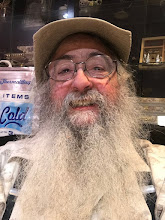Friday, March 28, 2008
Wednesday, March 19, 2008
Purim Spiel
From the blog Elder of Ziyon"
There are two types of entities in the world, the eternal and the temporary. While there is only one true Eternal, Hashem has given us symbols of tangible objects that also can be considered "permanent" because they last for very long periods of time.
To see what Hashem is designating for us to consider "permanent" we need to see how Hashem Himself is described. And one of the most famous descriptions of Hashem is "Hashem Tzuri v'Goali", Hashem is my Rock and my Redeemer. The reason Hashem is described as a Rock is because rocks are permanent features in our lives; by referring to Hashem as a "Rock" we mean that He is eternal and reliable, just as huge stones are permanent in our lifetimes.
So we see that the concept of a Rock is associated with permanence, with eternity.
What object would be most associated with transience? The Gemara talks about two different kinds of kinyanim, those for things that are immovable - like land (kinyan karka) - and those for things that are portable (kinyan metaltilin).Even very heavy objects would be considered metaltilin, movable, because, in theory, one can place them on wheels and roll them somewhere else. In a sense, the best symbol for something that is not permanently in place would be the wheel. Indeed, in Kabbalistic thought we have the concept of "gilgul neshamos", that our own temporary lives roll from one instance to another as if they are all part of a wheel, a gilgul. Things that are temporary are things that can roll on wheels.
So we have these two concepts: permanence and transience, of the constant and the temporary - of the Rock, and the Roll.
Rock and roll represents the synthesis of these two diametrically opposed concepts; it is the place where the Eternal meets His lowly subjects, and we can only get a glimpse of His power by listening to an electric guitar powered by a thousand-watt amp cranked up to 11. Just as the Bnei Yisrael "saw" the kolot at Har Sinai, the sense of hearing being transformed into the sense of sight, so we can "feel" the sounds from a good rock and roll band, transforming sound into feeling, and giving us an experience as similar as possibly to Maamad Har Sinai.
And rock and roll artists understand their role in this synthesis. For example, when The Who proclaims "Long Live Rock" notice how they are only talking about the permanent part of the equation, the Rock, and not the temporary Roll, which would be nonsensical. But it makes perfect sense for Joan Jett to declare "I Love Rock and Roll" as she is proclaiming her love of all of Creation as well as the Creator.
Perhaps the best proof of this dialectic is in the halachos of Purim itself.
We all know that we celebrate Purim on the 14th of Adar - except in walled cities, when we celebrate it on the 15th. The walls of the walled cities symbolize the permanence of the Rock - indeed, the walls were constructed out of rocks - while the Purim of everyone else is the Purim of galus, or temporary existence, of the Roll from one place to another. Shushan Purim is mainly celebrated in Yerushalayim nowadays, which houses the Even Shesiyah - the Foundation Stone, the Rock of all rocks. Together, Shushan Purim and Purim are the Rock and the Roll.
But there is a hidden aspect of this concept that both proves it and makes us understand it better.
So far, we have discussed the "Rock" and the "Roll" of "Rock and Roll." But we have ignored the "and", the small word that connects the two, In fact, that "and" is terrifically important in understanding the synthesis of the Rock and the Roll.
This year, Purim and Shushan Purim are not next to each other, but we have a Purim MeShulash here in Eretz Yisroel, a three-day Purim that is separated by Shabbos. Just as Rock and Roll are connected by the "and", so is the triple Purim of this year connected by the Shabbos. And this hidden aspect of the "and" - the hester astir - shows us the importance of the Shabbos.
Shabbos has aspects both of the permanent Rock - it is eternal and always there - and the transient Roll - it only rolls around once a week. Indeed, in Olam Haboh, it will be "yom shekulo Shabbos u'menuchah" - it will be truly permanent. But in this world it only gives us a taste of permanence, but it is not permanent itself. Yet is is certainly also not temporary.
So Shabbos is the bridge between the eternal and the temporary, between the Purim and the Shushan Purim, between the Rock and the Roll.
But this still leaves a major question: if Purim precedes Shushan Purim, then why is it called Rock and Roll, and not Roll and Rock?
The answer is simple. In Hebrew, "and" is not a word, but a mere letter - the letter vav. And, in this case, specifically on the day that is v'nehepach hu, it is a vav hamehapeches, a vav that turns Roll and Rock into the proper Rock and Roll.
May we always learn from Purim Hameshulash, and from Rock and Roll how to run our very temporary lives with a constant awareness of the Eternal.



